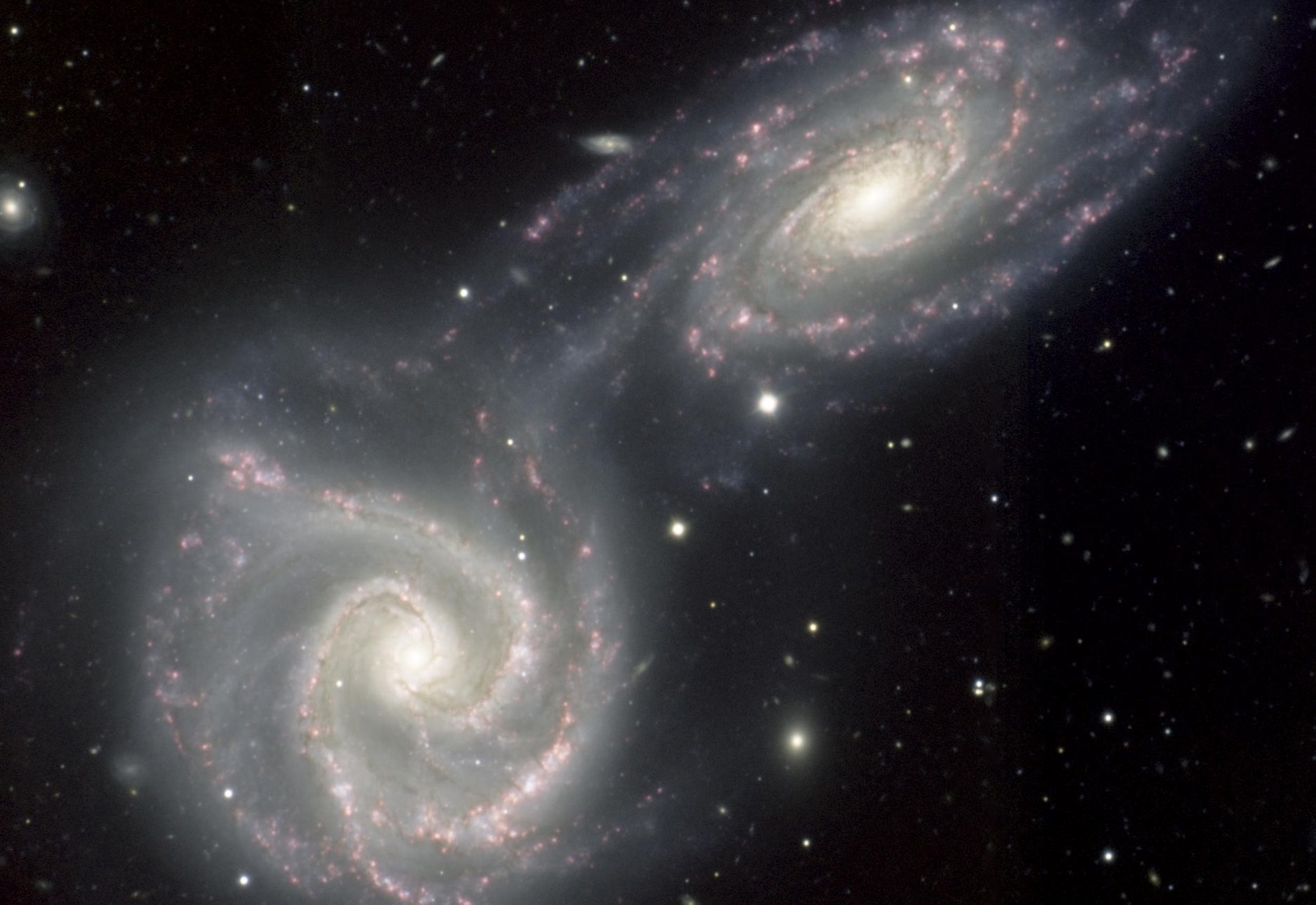The world of physics may have been turned on its head after Fife scientists made a discovery that challenges Einstein’s theory of gravity.
Researchers at St Andrews University claim to have a found a ring of galaxies displaying characteristics that are scientifically impossible under what is currently known.
The 10 million light year-wide ring of small galaxies is said to be expanding, with the tsunami-like wake in the sky likely to have been stirred up by a near-miss of the speeding Andromeda galaxy with our own galaxy, the Milky Way.
The two massive galaxies always orbited each other in a plane and would have scattered dwarf galaxies in their paths, perhaps explaining why the speeding dwarfs are in a plane also containing the Milky Way and Andromeda.
Confirming the scale of the discovery, Dr Hongsheng Zhao, reader in the university’s school of physics and astronomy, said: “If Einstein’s gravity were correct, our galaxy would never come close enough to Andromeda to scatter anything that fast.”
Indranil Banik, the PhD student who led the study, continued: “The ring-like distribution is very peculiar.
“These small galaxies are like a string of raindrops flung out from a spinning umbrella.
“I found there is barely a one in 640 chance for randomly distributed galaxies to line up in the observed way.
“I traced their origin to a dynamical event when the Universe was only half its present age.”
“In Einstein’s gravity paradigm, hypothetical dark matter is always invoked.
“Such a high speed requires 60 times the mass we see in the stars of the Milky Way and Andromeda.
“However, the friction between their huge halos of dark matter would result in them merging rather than flying 2.5 million light years apart, as they must have done.”
Following the pair’s initial work, Dr Zhao has now applied for further funding to work out detailed simulations of the origin of the ring and our neighbouring galaxies in alternative gravity.






